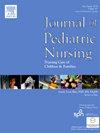儿童在医院治疗过程中接受等摩尔氧和氧化亚氮(EMONO)镇静的经验——一项定性访谈研究
IF 2.3
4区 医学
Q2 NURSING
Journal of Pediatric Nursing-Nursing Care of Children & Families
Pub Date : 2025-07-24
DOI:10.1016/j.pedn.2025.07.005
引用次数: 0
摘要
背景:在医院治疗过程中,儿童被给予双摩尔氧和一氧化二氮混合物(EMONO),但关于儿童接受这种干预的经验的知识有限。目的用儿童自己的语言描述儿童在医院手术过程中接受EMONO的经历。方法于2023年3月至5月在挪威东南部的一家医院进行定性探索性研究。6名10至16岁的儿童参加了个别的半结构化访谈。采用专题分析。该项目由挪威教育和研究共享服务机构(SIKT ref. no. 6)批准。416290)。结果主要发现是儿童体验到欣快感、梦幻状态、身体变化、感官体验改变,并且不太关心与手术相关的恐惧。研究中的儿童描述了对EMONO的身体、感官和情绪反应,包括积极和消极的体验。那些反复接触的人注意到每个例子都不同。所有的儿童都报告了与手术相关的恐惧减少,并表示愿意在类似的临床情况下再次接受EMONO。孩子们在保持部分意识的情况下描述了类似梦境的感觉。他们的声明支持EMONO作为一种潜在的有价值的药物干预来减少在医院接受医疗程序的儿童的焦虑和压力。儿童接受EMONO的经验可以用来更好地准备、促进和管理对儿童的干预。它可以帮助理解潜在的反应,防止和减少不舒服的经历。本文章由计算机程序翻译,如有差异,请以英文原文为准。
Children's experience with receiving equimolar mixture of oxygen and nitrous oxide (EMONO) sedation during hospital procedures- A qualitative interview study
Background
Equimolar mixture of oxygen and nitrous oxide (EMONO) is administered to children during hospital procedures, but there is limited knowledge about children's experiences with receiving this intervention.
Objective
To describe how children experience receiving EMONO during hospital procedures, using their own words.
Method
A qualitative, exploratory study was conducted at a hospital in the southeast of Norway between March and May 2023. Six children aged 10 to 16 years participated in individual semi-structured interviews. Thematic analysis was used. The project was approved by Norwegian Agency for Shared Services in Education and Research (SIKT ref. no. 416290).
Results
The main findings were that children experience euphoria, dreamlike states, physical changes, altered sensory experiences, and care less about their fears related to the procedure.
Conclusion
Children in the study described physical, sensory, and emotional responses to EMONO, including both positive and negative experiences. Those with repeated exposure noted that each instance differed. All children reported less fear related to the procedure and expressed willingness to receive EMONO again in similar clinical situations. The children described dream-like sensations while maintaining partial awareness. Their statements support EMONO as a potentially valuable pharmacological intervention for reducing anxiety and stress in children undergoing medical procedures in hospital settings.
Application to practice
Children's experiences with receiving EMONO can be used to better prepare, facilitate, and administer this intervention to children. It can help to understand potential reactions and to prevent and minimise uncomfortable experiences.
求助全文
通过发布文献求助,成功后即可免费获取论文全文。
去求助
来源期刊

Journal of Pediatric Nursing-Nursing Care of Children & Families
NURSING-PEDIATRICS
CiteScore
3.70
自引率
8.30%
发文量
291
审稿时长
65 days
期刊介绍:
Official Journal of the Society of Pediatric Nurses and the Pediatric Endocrinology Nursing Society (PENS)
The Journal of Pediatric Nursing: Nursing Care of Children and Families (JPN) is interested in publishing evidence-based practice, quality improvement, theory, and research papers on a variety of topics from US and international authors. JPN is the official journal of the Society of Pediatric Nurses and the Pediatric Endocrinology Nursing Society. Cecily L. Betz, PhD, RN, FAAN is the Founder and Editor in Chief.
Journal content covers the life span from birth to adolescence. Submissions should be pertinent to the nursing care needs of healthy and ill infants, children, and adolescents, addressing their biopsychosocial needs. JPN also features the following regular columns for which authors may submit brief papers: Hot Topics and Technology.
 求助内容:
求助内容: 应助结果提醒方式:
应助结果提醒方式:


